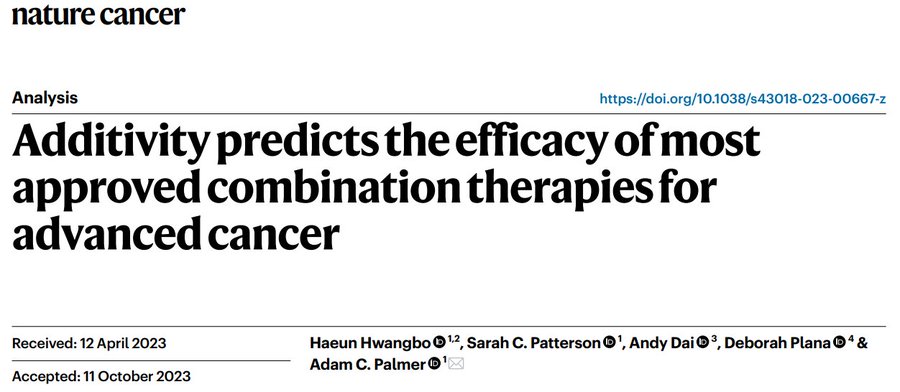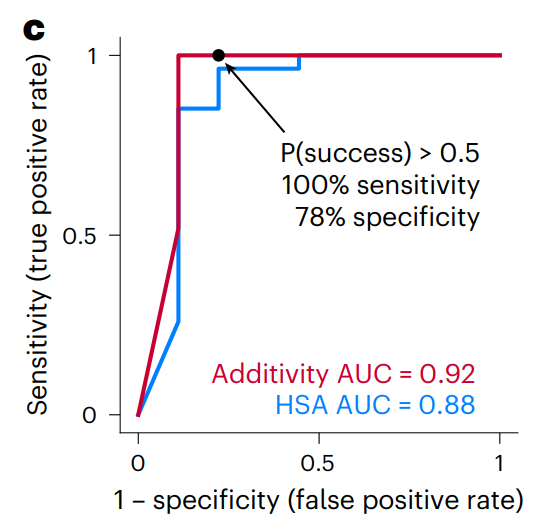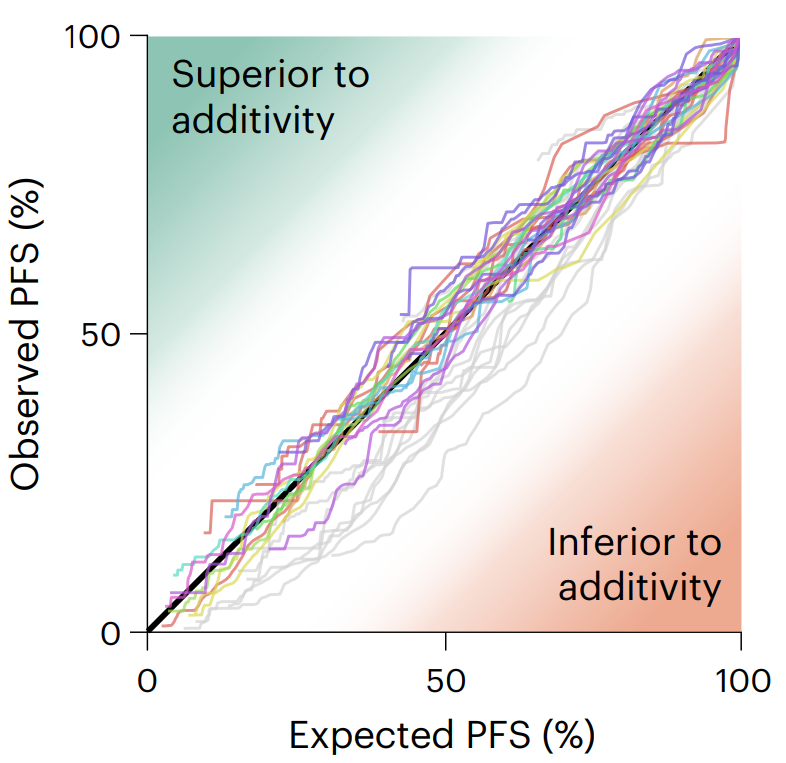David Steensma, Chief Medical Officer at Ajax Therapeutics, and Anthony Letai, Professor at Dana-Farber Cancer Institute, shared an X/Twitter post by Adam C Palmer, Assistant Professor of Pharmacology and Computational Medicine at UNC-Chapel Hill, adding:
“I remember a long-ago FDA Oncology meeting with a small company developing a Myelodysplastic syndrome (MDS) drug. The company was convinced their drug was synergistic with Hypomethylating Agents (HMAs) and kept saying “We’re 2+2=5.” Finally, an FDA official said they were perfectly happy for 2+2 to equal 4 if 4 were safe patients.” – David Steensma’s.
“This is a very important message we all need to take to heart as we are designing combination therapies. Is synergy really a priority? Great job, Adam, asking the questions that need to be asked.” – Tony Letai’s.
Quoting Adam C Palmer’s post:
“New paper: Most approved drug combinations for advanced cancer (1995-2020) have predictable clinical efficacy, because they have additive effect on Progression-Free Survival times in Nature Cancer by Haeun Hwangbo, Sarah Patterson and Deborah Plana.
The impact: success or failure of phase 3 clinical trials is predictable! 100% of FDA-approved drug combinations were expected to succeed based on monotherapy efficacy. 78% of failed phase 3 trials were expected to fail based on (lack of) monotherapy efficacy.
The meaning: effective drug combinations don’t owe their success to mechanisms of synergy, they owe it to individually effective ingredients. Additivity doesn’t mean settling for less. You don’t need ‘1+1 makes 3’ if you can have ‘5+5 makes 10’.
Synergy sometimes happens (5% of combinations more-than-additive at P<0.05) but those aren’t the ‘best’ combinations; they beat a lower expectation. PFS is well predicted by additivity. Where it errs is some combos are less-than-additive, but still effective.
By forecasting trial results this model could hugely improve the efficiency of clinical drug development. This work also informs combination design: instead of seeking mechanisms of interaction, it suggests to prioritize single-agent efficacy and tolerability in combination.
Please share with anyone working on combination cancer therapy, especially if developing clinical trials. This study should help more trials to succeed and advance cancer care. Many subtle points explained better in the paper – you can read it here.”
Source: David Steensma/X, Anthony Letai/X and Adam C Palmer/X


